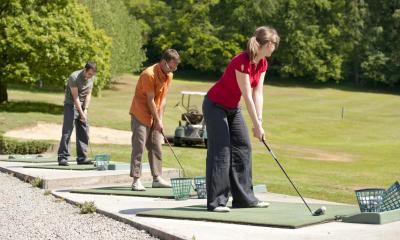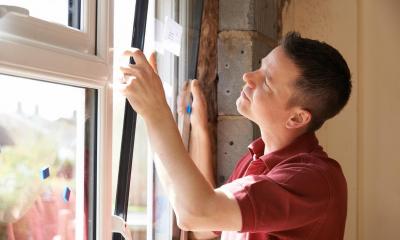
Driving ranges attract a wide range of customers, from families wanting a fun leisure activity to serious golfers refining their technique. Read our in-depth practical guide to starting up and running your own golf driving range.
- Research your target market
- Establish your customer profile
- Level of demand
- Location
- Premises
- Pricing policy
- Buy an existing business
Research your target market
The aim of carrying out market research when planning your business is to make sure that your business has every chance of success. It's worth giving serious thought to the following points.
Choosing your location
The right location for your range is very important. Whether you are going to start a range from scratch or buy an existing range you need to consider all the aspects of your proposed location to make sure that it offers you the best opportunity to succeed.
Competition
Check out the competition in your local area to establish whether the market is saturated. You can do this by searching online or by simply driving around your neighbourhood. If there are already driving ranges within, say, a 10-20 mile radius of your proposed location, consider whether there will be room for you too.
It is also worth noting how much your competitors charge and how busy they are at different times of the day. If there aren't any driving ranges near your proposed location you should try to establish why this is. It may simply be that you are the first to identify the opportunities available or it may mean there is no demand. If there are a lot of golf courses near your area, you may consider them to be a good source of potential custom. However, many courses have their own practice facilities, and it is worth checking this out as part of your market research.
Catchment area
Make a survey of your proposed catchment area for your driving range. People will typically be prepared to travel around 10 miles to go to a range, so work on a 10-mile radius unless there are any particular factors about your location or the facilities you plan to offer that means that customers would come from significantly closer or further away. Your catchment area should be well populated, or the range should be served by good roads carrying plenty of through traffic.
Market studies
You may find it useful to read the Golf Features, the monthly publication from the Organisation of Golf & Range Operators (OGRO) as part of your market research. This will give you an insight to the golf range market and may help you to estimate the expected level of demand for your own facility. Visit the OGRO website for more details of how to join OGRO.
Research current trends, plus legal and tax issues
- Sector trends for golf driving ranges
- Legal issues for golf driving ranges
- VAT rules for golf driving ranges
Establish your customer profile
Golf ranges typically have a mix of customers, from the outright beginner and the people who just want to "have a go" to advanced golfers practising elements of their games. Some range visitors will only ever play on a range whereas others will also be members of a golf club and/or play on full-size pay-to-play non-member courses. Although the stereotype of the typical golfer as a comfortably-off middle-aged man still rings true, the sport has made efforts to attract more female and young players in recent years. Because playing on a range is more accessible, less time-consuming and much less expensive than playing on a full-size course, a range is perhaps more likely to have a more diverse customer profile than a golf club. For example, a parent who is a keen golfer may bring their young children as a family activity.
There is no obligation to take lessons at a driving range; most of the people that use a driving range will not have any. However, many ranges do offer lessons with a professional and these are usually popular, not just with total beginners but also with good golfers who want to improve their technique. Video analysis is often included in lessons given in driving ranges.
You may also find that your range is popular with people wanting a leisure activity, such as stag and hen parties, tourists wanting a wet weather activity and so on.
Level of demand
Try to make an estimate of the number of baskets of balls that will be purchased in a typical day. You can then multiply this by 365 - or the number of days in a year you plan to open - to find your annual sales. The things to take into account are:
- the number of bays in your range
- the maximum baskets of balls that could be hit from each bay in a day. If the range is open for 10 hours per day and a typical golfer takes half an hour to work through a basket of balls, then each bay could theoretically have a maximum capacity of 20 baskets per day
- the overall occupancy of the range. For example, during a typical day the range may be at maximum occupancy (each bay in use) for a couple of hours in the evening but be only at 5% occupancy at other times. You will have to estimate what you think the overall daily average would be, perhaps based on other ranges that you have visited
Example
- Number of bays - 25
- Maximum baskets per bay per day - 20
- Estimated overall occupancy per day - 20%
Using those figures the maximum number of baskets of balls hit in a day from the range as a whole would be 25 x 20 = 500 baskets of balls. Adjusted for the estimated daily occupancy 500 x 20% = 100 baskets of balls.
If you decide to charge £4.00 for a basket of balls, then using the figures in the example, your daily takings would be £400.00 which would give an annual turnover of around £146,000, if the range was open all day, every day.
(Figures used for illustrative purposes only - your own results may vary significantly)
Location
The location of your driving range can play an important part in giving your business the best chance of success. There are certain things that you need to take into account when choosing your location. For example:
- the nature of your catchment area. It is important that the range is near to a sufficiently large local population or has good roads nearby carrying a sufficient traffic. Depending on the level of competition and the population density of your area you may realistically expect to attract customers from within a 10-15 mile radius
- whether there are golf courses nearby. This will indicate that golf is popular in your area, and the members of the courses are potential customers for your range. Although many courses have their own practice facilities, a lot of the time these are not undercover and are not usually floodlit
- the expected level of light pollution. If the proposed location of your new range is too close to local housing, the planning authorities may reject your application on the grounds of light pollution
Premises
Your driving range is likely to stand in an area of between 6 and 15 acres, consisting of:
- The field into which the balls are hit. This will need to be about 350 metres long to ensure that balls don't go outside the perimeter. (While some golfers do hit the ball in excess of 350 metres when playing on a golf course, the types of ball used on driving ranges tend to travel less far. Also, if you leave the grass long at the perimeter of the field, this will help slow down any balls that are travelling towards the boundary of your land.) The field will also usually contain a few targets, nets and flags for golfers to aim at as well as yardage markers at 50, 100, 150, 200 and 250 yards so that golfers can tell how far they have hit the ball. You may also have high perimeter fencing to prevent poorly aimed balls from damaging surrounding property and to make it easier for you to recover wayward balls.
- The bays from which golfers hit the ball. Generally, these are covered individual booths with waist-high partition walls on either side. The front of the bay opens onto the field and the back of the bay opens onto an access corridor. The bay contains a tee mat off which the golfer hits the ball. Alternatively you may decide not to have bays at all and choose to have just tee mats spaced at two or three metre intervals, possibly separated by a low barrier on either side.
- The reception area. This may be a small area with just a ball dispenser and a till or it may be larger with a retail area and possibly a café.
- The car park. Your customers will be prepared to come to your range from quite far afield so you will need a parking area to accommodate their cars - even if they are local, they will often bring their own clubs with them so are unlikely to want to walk too far and will probably prefer to drive.
- Storage and utility sheds. You are likely to have various bulky items of equipment like ball collectors and mowers that will need to be stored overnight. You will also need an area for ball cleaning.
With land prices increasing in 2022 to around £9,500 per acre the total cost of construction of a driving range is has risen considerably in recent years. It is likely to be cheaper to buy an existing range. You can search for possible sites on the Golf Courses for Sale website.
Pricing policy
You will need to decide on the prices you are going to charge. Because your customers will be mainly members of the public, prices quoted generally include VAT. You may decide to charge as little as possible - while still making a profit - to try to attract as many customers as you can, particularly if you have a lot of competitors nearby.
Prices are normally fixed by reference to the number of balls in a basket (or bucket). Driving ranges normally offer a range of different size baskets, which generally includes small baskets of 50 balls and large baskets of 100 balls. You might, for example, decide to charge £4.00 for a basket of 30 balls and perhaps £10.00 for a basket of 100 balls.
(These prices are illustrative only - the amount you charge will depend on demand, the level of competition and the prices charged by your competitors.)
You may find it helpful to visit other driving ranges to see how much they charge and how many balls are provided for this charge. It's a good idea to set your prices broadly in line with your local competitors (if you have any) unless you are confident that customers would choose your business over theirs, regardless of the prices charged.
Special offers and promotions
You may decide to run promotions and discounts from time to time, such as one free basket of balls for every five already purchased or to run a loyalty card scheme to encourage repeat visits.
Perhaps you could try to attract people such as retired golfers during quieter, mid-week periods when you are less busy. You could offer a discount, extra balls or a voucher for a return visit or for your cafe (if you have one).
Buy an existing business
You might decide to buy an existing driving range rather than start your own venture from scratch. Buying a going concern can mean that the range is already set up so you don't need planning permission, customers, regular sales, staff and equipment are already in place.
Other matters to consider include:
- whether there are any unresolved disputes, such as complaints from neighbours about noise or light pollution
But buying a business can be a hazardous, expensive process unless you have the right skills and experience on your team, including legal and financial know-how. Establish the genuine trading and financial position, so that the price you pay for the business is not too high.


